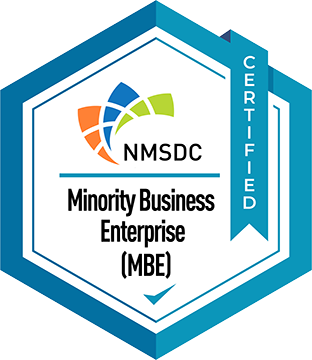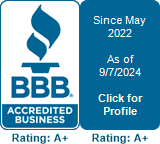Translate or not to translate, that is the question.
Producing good content requires a great deal of effort, analysis, and thought process – not to mention a budget. It may seem like quite a challenge to create an eye-catching website with graphics and useful reference material for your visitors. You’ll need to educate your website visitors while adhering to SEO standards, ensuring your content is relevant and outshines the competition. It is no small feat.

Creating White Papers, case studies, or content to explain your product or services is an extremely important success factor in your native language. Then, consider translating that content into other languages to connect with new multilingual potential buyers. Not only will the content need to be translated, but also presented in a way that adheres to your brand standards. Can you sell your goods or services globally? Then, if your website is in only one language, you certainly have an audience that you are not reaching.
English by the numbers:
Roughly 1.5 billion people out of 7.8 billion speak English, which is almost 20% of the global population. However, almost 50% of all content found on the web is in English. This represents a huge opportunity for the organizations that are ready to invest in their multilingual content strategies for markets that no one else is reaching. When looking into different markets we can estimate the following use of the English language:
In The Americas: There are an estimated 350 million English native speakers. The majority of those speakers live in the US — about 300 million. 30 million native English speakers reside in Canada. Central and South America host about 20 million English speakers.
In Europe: There are roughly 212 million English speakers. English is often a lingua franca between people who don’t necessarily speak it as a first language. There is no other place in the world where this statement is so true.
In Africa: We estimate that roughly 10 million people speak English as their native language in Africa. Many Africans have learned English as a second language and we estimate that around 230 million people in Africa, including native and non-native, speak English in total.
In Asia: There are few native English speakers in Asia. Though it’s difficult to estimate the number of people who speak English in this region, Ethnologue give us an estimate of around 460 million. India has about 265 million English speakers, followed by the Philippines (50 million), Bangladesh (29 million) and Pakistan (25 million).
In Oceania: Across Oceania, there are over 30 million English speakers.
Languages other than English
Though English is a common language, there are many other languages spoken by huge populations across the globe that represent a potential market you can reach through translation. Below you can find a chart of the top 20 languages by number of speakers in the world:
| Rank | Language | Total speakers |
|---|---|---|
| 1 | English | 1.452 billion |
| 2 | Mandarin Chinese | 1.118 billion |
| 3 | Hindi (excl. Urdu) | 602.2 million |
| 4 | Spanish | 548.3 million |
| 5 | French | 274.1 million |
| 6 | Modern Standard Arabic | 274.0 million |
| 7 | Bengali | 272.7 million |
| 8 | Russian | 258.2 million |
| 9 | Portuguese | 257.7 million |
| 10 | Urdu (excl. Hindi) | 231.3 million |
| 11 | Indonesian (excl. Malay) | 199.0 million |
| 12 | German | 134.6 million |
| 13 | Japanese | 125.4 million |
| 14 | Nigerian Pidgin | 120.7 million |
| 15 | Marathi | 99.1 million |
| 16 | Telugu | 95.7 million |
| 17 | Turkish | 88.1 million |
| 18 | Tamil | 86.4 million |
| 19 | Yue Chinese (incl. Cantonese) | 85.6 million |
| 20 | Vietnamese | 85.3 million |
Using Plugins for Translation?
Many organizations utilize translation plugins (widgets) that translate website content into multiple different languages automatically. However, there are drawbacks to translation plugins and it can even lead to potential brand damage. If a translation is incorrect or unprofessional, it can possibly do more harm to your reputation than good. You will likely run into website display inconsistencies when utilizing a translation plugin.
Some languages expand, or get longer, when translating. This text expansion can result in a poorly formatted website and negative end-user experience. Furthermore, you might want to localize your site with culturally appropriate images in a process known as localization. Those translation plugins cannot do that for you automatically.
How many languages?
Translating your website properly can open many doors for you: better international SEO rankings, more visits, improved brand recognition, increased sales, and more. The best way to translate a website is to work alongside the right partner that would manage and coordinate a multidisciplinary team effort that would include technical and linguistic capabilities. Your partner should bring to the table linguistic, technical and SEO know-how to ensure a great end user experience in the language of choice. A better user experience will generate the trust you need in those new markets to start receiving your Return on Investment (ROI).
The first step is to establish which languages you will support. The more languages, the more you will need to invest in your website. Translation can vary in cost by language, so you can prioritize which markets and languages will be the most beneficial for your organization. We recommend that you define a budget based on the languages and an analysis of your current website traffic. Your current traffic and where your visitors come from will allow you to determine your priorities. Your website’s success will depend upon how well your organization caters to an international audience.
Limited budget? Microsites could be a starting point for you.
If you are working with a limited budget, you have the option to create multilingual microsites. Microsites are limited, static content which work to draw traffic from multilingual customers. Once the individuals visit your site, you can use the data for valuable business insights.
For example, in a college environment, you might want to write a special message for your international prospects. Perhaps you’ll advertise that your school will welcome them as an international student as well as list the main steps that the student would need to follow. In addition to this information, you can offer the student an English pre-requisite course to bring up the prospective students’ English up to speed. The message for those international students would not be the same as your US-based prospective ones. Giving them the option to request information in their own language would be an attractive selling tool and would allow the school’s marketing team to promote the microsites.
Microsites can be a website on their own, or a subdomain or section within your business website.
Technology
The technology ecosystem dictates how simple or costly a translation might be. When selecting your technology, it is important to consult everyone who will participate throughout the process: web developers, multilingual SEO experts and your translation agency. You’ll need to convene from the very beginning of your website creation process. Depending on your multilingual content goals, strategies, and required translation turnaround for any new/updated content, you might want to consider one Content Management System (CMS) over another. A widely adopted and maintained CMS will be your best bet. Also, consider a CMS that supports multilingual sites and multilingual SEO.
An alternative to the above is the Translation Proxy approach. This method is CMS-agnostic, meaning it works independently of the content management system you’re using. The Translation Proxy captures the source language content and converts it into a format that your translation agency can process.
In some cases, the proxy can be directly integrated with the translation agency’s CAT (Computer-Assisted Translation) tools, streamlining the workflow between source content updates and the publication of multilingual versions.
The goal of this solution is to allow your team to focus solely on managing the source content, while a linguistic and technology partner like Global Arena handles the translation and publication of multilingual content.
Why would you want to translate your website?
We have compiled 10 powerful reasons for you to thnk about:
The order in which I present the below reasons are not by priority nor importance. Depending on your business strategy and the product/service you sell, some might be more important than others. You can use the below list to create your own priority list based on your activities and business goals.
1. Improve Your Customer Experience, Increase Your Customer Base.
It’s important to present your product or service in a way that will be appealing to the prospective client. It’s equally important to make it as simple as possible to purchase it. A better customer experience correlates to a high number of conversions. In a globalized economy, effective multilingual transcreation is a must.
If you wish to increase the number of overseas consumers, your site must “speak” their native language. Why? Because roughly 72% of consumers spend the majority of their time online visiting websites in their native tongue. A very similar number of people also share that they prefer to buy a product presented in their own language. The sense of trust quality is attached to how the website can communicate in the user’s mother tongue.
Also, from a psychological standpoint, we can theorize that multilingual shoppers prefer a shopping experience in their native tongue. Visitors are less likely to purchase an item from a site that is not in their native language and the vast majority visit websites that feature their own language. In the brick-and-mortar world, it makes complete sense that a potential client would buy a product if they hear about it in their own language. The same applies to e-commerce.
Giving your multilingual customers an authentic online experience in their own language is one of the top reasons to translate your site. Giving a stellar multilingual customer experience allows you to make new customers aware of your brand while standing out from your competition.
Today’s clients expect a highly personalized customer experience. Therefore, providing your information in their own language is one of the first ways you can accomplish this. It shows that your brand cares about its image and its customers. A potential client will easily turn to your competition if they offer a more localized and culturally relevant experience that what you do.
Furthermore, if you customize your site to recognize different languages and cultures, you will establish an emotional connection with your prospective clients. This will surely translate into the possibility to build long-term customer relationships and loyalty. Even in a region where English is the primary language, there are still a significant number of non-native speakers. If you present yourself in their native language, you might earn their business over your competitors
2. Advertise Products Sold Internationally.
Let’s imagine that a company in the US is doing well in their native market. Thanks to word of mouth, they will probably have international clients interested in their product as well. So they supply to foreign countries with international shipping and various currency payment options. However, the website has English-only content. Imagine if they fully translate and localize the site to the language spoken to the top 3 countries that they ship. They will increase their chances of increasing their foreign sales and most likely, they will achieve a positive ROI in no time.
Does this resonate to you?
3. Your Competition Has A Multilingual Website.
Is your competition serving to clients globally with a multilingual site? If yes, you can bet they get more recognition and, likely, more online revenue. To be relevant in those international markets, you must translate your website, too.
The longer you wait to go multilingual, the more time your competitors have to increase their international market share. Translating your website can differentiate you from the competition. Furthermore, having a professionally translated website can make your product the market reference. If your competitors don’t have multilingual content, being the first in any given market can help you to gain market share faster.
4. Go Big, Go Global.
If your competitors don’t have a multilingual website, you could be the first and will be able to capitalize on creating your brand’s multilingual experience for foreign consumers. Many of them will remain loyal to you even if your competition goes multilingual in time.
If you’re already conducting business globally, it’s good practice to focus on localizing and refining your multilingual content for international customers. Customers will trust your brand and product more if they can read your product’s descriptions and benefits, understand shipping and payment options, and complete their purchases in their native language.
5. Data Shows Translation Is the Logical Decision.
Take a close look at your website analytics. When you dig into your visitors’ data, the diversity of your visitors’ geographic locations may surprise you.
If you see higher than expected volumes of international traffic, determine what languages these visitors speak and seize the opportunity to win their business.
Ask your webmaster or SEO expert the following questions: Besides our domestic market, where else is our visitor traffic coming from? Are the global visitors spending time navigating our site, or are they bouncing? Answering these questions with analytical data can reveal untapped markets that may benefit from multilingual websites.
6. Enhancing Your International SEO.
Global SEO is one of the most effective strategies for developing an international presence. A well-thought out and implemented SEO strategy will ultimately drive traffic to your site and generate leads. The implementation of a professional multilingual SEO strategy can increase conversions, the main goal of all e-commerce.
Hiring a translation agency with transcreation and SEO expertise is the best way to start translating your website.
You should consider your site as more than a simple platform for customers to engage with. Your site is an additional “salesperson” in your organization that you need to train, maintain, and support. Multilingual, SEO-friendly content will allow you to boost search rankings and multiply your organic traffic. Your content strategists should create multilingual content, full of SEO-rich keywords dictated by the traffic analysis that you obtain by reviewing what users search in their preferred languages.
Do you want to reach a wider audience? Translating your website is one of the best decisions you can make. The more people that understand your content, the bigger your prospect pipeline could be. Translating your website not only helps you break the language barrier but also allows your brand to shine in a global setting.
However, it is even more important the translation reads well. On many occasions, transcreation is a must. You need professional native linguists to work on your multilingual content. If possible, they need to have the capability to work on their translation and see it in context. This means that the linguists will be able to see how their translation displays in your website design.
Effective, pristine translations coupled with the implementation of professionally designed multilingual SEO strategy can help you gain the edge over your competition. You might want to simplify the way your multilingual audience finds and interacts with your brand through the website. This is even more true if a big percentage of your potential customers are non-English speakers.
What benefits can you expect from translating your website? From start to finish, you can expect:
-
- Higher ranking on search engines.
- Improved organic traffic.
- Reduced bounce rate.
- Increased time on site.
- More refined prospects.
- More conversions (sales).
7. Increase The Time That Users Spend Visiting Your Site.
Usually, when you have a website that has been professionally translated, you will lower your bounce rates, which will generate a better user interaction and increase visitors’ time on the site.
The aforementioned not only will help your multilingual SEO efforts but it will certainly increase the chances of making a conversion.
8. Build Global Trust, Build a Stronger Brand.
Online consumers typically only shop with websites that they deem trustworthy.
When a site is in a language that people don’t understand, they are more likely not to trust it.
A site that is thoughtfully and accurately presented in a variety of languages, however, gives an air of polish, authority, and global credibility that helps to form significant consumer confidence. A multilingual site gives consumers the impression that the brand cares deeply about their experience.
Whenever a brand is able to establish a foothold in foreign markets, it reaps the benefits of strengthening its brand on a global scale.
Nike, Pepsi and Amazon did not become the global household names they are today by providing audiences with English-only content.
While these reasons for website translation are informative, you may still be at a loss in deciding which languages to focus on for your translation efforts.
Targeting multilingual and global markets is a great way to sustain company growth, and localized websites are the best way to reach them. They’re key for:
-
- Increasing brand awareness.
- Educating potential customers, distributors, or partners about your brand and its offerings.
- Providing engaging customer experiences by serving new customers in their preferred languages.
Sometimes your reputation precedes you, and your brand takes off in a new market unexpectedly. If you discover unexpected overseas interest in your products or services, keep the momentum going by translating your website. This shows your appreciation for your new customer base and gives them a platform to directly engage with your brand.
A multilingual website shows your audience that you care about inclusivity and accessibility. These things are close to people’s hearts, and they portray your brand in a good light.
Being careful about how you deliver your message to customers will help garner admiration and trust for your brand. Customers who trust your brand can help create a positive buzz around it by talking about it on social platforms and by word of mouth in their circles. This is good for boosting the reputation of your business. The positivity around your brand can help you retain existing customers and attract new ones
9. Translation Will Bring An Increase In Traffic And Revenue.
Global users who can’t read your website won’t find you, and if they don’t find you, they won’t convert.
Making your content available in new languages will attract new customers, grow your website traffic, and ultimately lead to conversions. Conversions are not limited to on-site transactions. Even non-transactional websites benefit from translation in the form of completed contact forms, informational downloads, and phone calls to sales reps.
10. Find Your Return on Investment.
Translating a website is not a small feat. It requires planning, strategy, human resources, technical means, and a budget. Perhaps your initial goal when going multilingual might not be to convert clicks to sales. Maybe you want to raise awareness about your product and gauge your global audience’s interest in your product or services. You might find that audiences from different geographical areas might want different products. This knowledge would help you to customize your multilingual content as per your audience’s tastes.
Think about a specialized travel agency selling safari tours and relaxing tropical beach experiences. One target audience might only have interest in a safari tour. Another might only take interest in the relaxing tropical beach experience. There could also be a third target audience interested in an exciting safari followed by a stay to a relaxing, paradise beach. Knowing your prospect’s interests will help you to package (or not) your product to entice your audience in a more personal way. So, you might want to approach your multilingual website as an strategic project, with milestones and a budget associated with each goal.
So…What’s next?
There is no doubt that professionally translating, transcreating and localizing your website could be a sizeable investment. But it is also true that it will improve your brand recognition, your customer satisfaction and, most likely, your revenue. Ultimately, improving your brand perception is vital for any business. In many cases, your online presence and the quality of your multilingual content will determine if the clients decide to trust your brand and become your clients.
If you would like to further discuss the translation of your website or if you have other multilingual needs, drop me a line at cpont@globalarena.com or connect with me at my LinkedIn profile.







